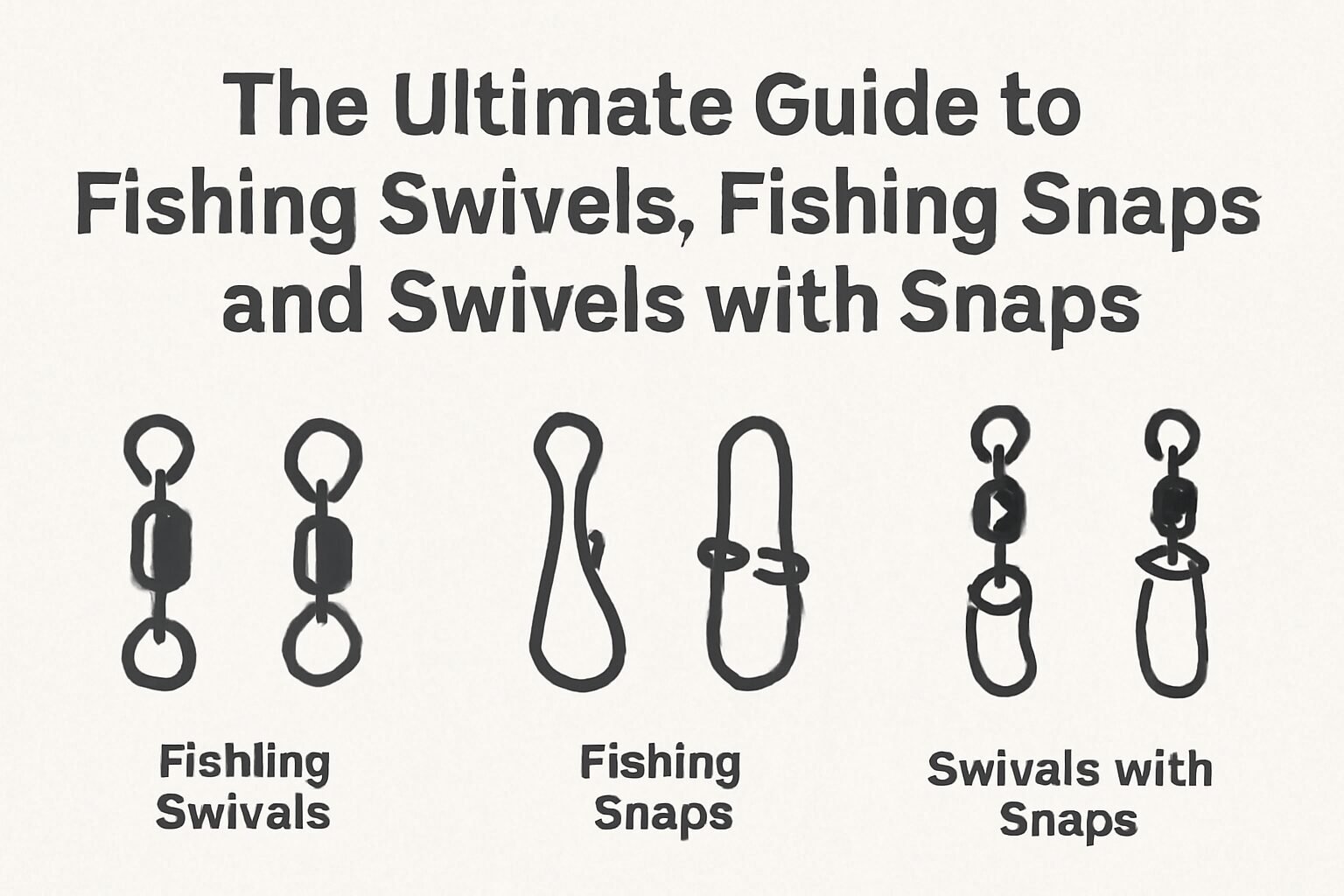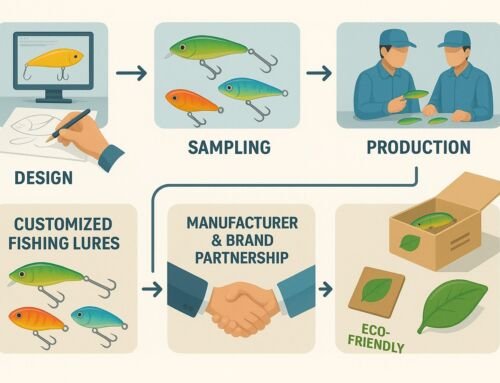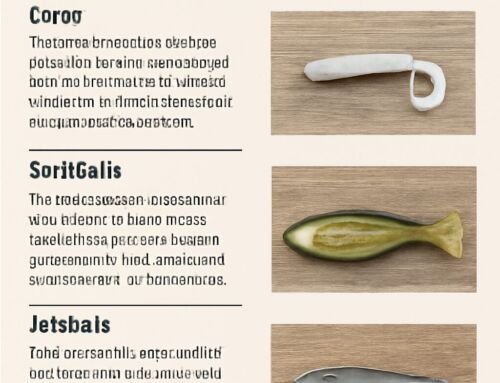The Ultimate Guide to Fishing Swivels, Fishing Snaps, and Swivels with Snaps: Types, Uses, and Best Practices
Fishing swivels, fishing snaps, and swivels with snaps are essential components of any angler’s tackle box. These small but highly functional tools allow you to connect fishing lines, hooks, lures, and other tackle components while preventing tangles, improving casting efficiency, and enhancing overall fishing success. Understanding the different types of fishing swivels and snaps, their uses, and how to select the right one for your fishing setup is crucial. This guide will walk you through the various types available on the market, their applications, and how to use them effectively.
What Are Fishing Swivels and Snaps?
Before diving into the different types of swivels, snaps, and swivels with snaps, it’s important to understand their purpose:
Fishing Swivel: A fishing swivel is a small device that connects two sections of fishing line or terminal tackle, allowing them to rotate freely. This helps to prevent line twists caused by spinning lures or baits, ensuring smooth and tangle-free fishing.
Fishing Snap: A fishing snap is a small spring-loaded clasp that attaches to your fishing line or terminal tackle, making it easy to switch lures, hooks, or other tackle quickly without needing to re-tie. Fishing snaps come in different designs, such as the coated snap or lock snap, depending on the application.
Swivel with Snap: This is a combination of both a swivel and a snap, giving you the benefits of both. The swivel provides rotation to reduce line twist, while the snap allows for easy connection and switching of hooks, lures, and other tackle.
Types of Fishing Swivels
Barrel Swivels
Description: Barrel swivels are the most common type of swivel used in fishing. They consist of two small, cylindrical metal pieces connected by a swivel mechanism in the middle.
Best For: General-purpose fishing, such as bass fishing, trout fishing, or panfish.
Usage: These swivels are typically used to prevent line twist when using spinning lures, spoons, or crankbaits. They are also useful for connecting leaders to the main fishing line.
Fishing Tip: Use barrel swivels with lightweight setups to prevent excessive line twist. For larger species, consider using heavy-duty barrel swivels.
Snap Swivels
Description: A snap swivel is a combination of a barrel swivel and a snap. The snap portion allows for easy attachment of hooks, lures, or weights, while the swivel prevents the line from twisting.
Best For: Freshwater and saltwater fishing, especially when using trolling rigs or when quick tackle changes are required.
Usage: Snap swivels are widely used for trolling, saltwater fishing, or when anglers need to change lures or rigs quickly.
Fishing Tip: When using snap swivels for trolling, ensure the snap is large enough to handle the lure size and strength of the fish.
Swivel with Snap (Combo Swivels)
Description: This type of swivel integrates both a swivel and a snap, offering the convenience of both functionalities. It’s ideal for anglers who want both rotation and a quick way to change tackle.
Best For: A variety of fishing applications, such as freshwater, saltwater, and deep-sea fishing.
Usage: Swivel with snap combos are particularly useful in situations where quick lure or rig changes are essential, such as when switching between different lure types or when fishing in strong current.
Fishing Tip: Use combo swivels for larger fish species or in environments where you frequently need to adjust your tackle setup quickly.
Coated Swivels and Snaps
Description: These swivels and snaps have a protective coating, typically made of plastic or rubber, which helps protect both the fishing line and the tackle. The coating prevents wear and tear, reducing friction and the risk of line abrasion.
Best For: Fishing in weedy, rocky, or abrasive environments, such as river beds or areas with strong currents.
Usage: Coated swivels and snaps are ideal for anglers using braided lines or fishing in environments where the tackle might rub against rocks or other structures.
Fishing Tip: When fishing in shallow waters with a lot of debris or underwater structures, coated swivels and snaps help to protect your line and ensure a smoother fishing experience.
Heavy-Duty Swivels and Snaps
Description: Heavy-duty swivels and snaps are built for strength and durability, designed to handle larger fish species or extreme fishing conditions, such as deep-sea or offshore fishing.
Best For: Big game fishing, offshore trolling, or saltwater fishing targeting large species like marlin, tuna, or shark.
Usage: These swivels and snaps are perfect for use with large lures, rigs, or heavy tackle setups. They are designed to withstand the immense pressure exerted by big fish during the fight.
Fishing Tip: Always check the weight rating of heavy-duty swivels and snaps before use to ensure they can handle the strain during a catch.
Types of Fishing Snaps
Interlock Snaps
Description: Interlock snaps are simple and secure, featuring a spring-loaded mechanism that locks the snap in place once closed.
Best For: General freshwater and saltwater fishing applications.
Usage: These snaps are easy to use and ideal for quick tackle changes. They’re commonly used with lures, hooks, and other terminal tackle.
Fishing Tip: Interlock snaps work well for finesse fishing or when using smaller lures that require a secure connection.
Locking Snaps
Description: Locking snaps have an additional safety feature that ensures the snap cannot accidentally open. This is particularly useful when fishing in rough conditions or with large, aggressive fish.
Best For: Heavy-duty fishing applications, including saltwater and big game fishing.
Usage: Locking snaps are perfect when using large rigs, such as those required for shark fishing or offshore trolling.
Fishing Tip: Always use a locking snap when trolling with large baits or when fishing in rough waters where tackle failure is a risk.
Quick-Release Snaps
Description: Quick-release snaps are designed to easily open and close, allowing anglers to quickly change lures or hooks without hassle.
Best For: Fast-paced fishing situations where time is of the essence, such as when you need to switch between different baiting techniques quickly.
Usage: These snaps are ideal for fishing scenarios where you’re trying different lures or rigs throughout the day and need to make quick adjustments.
Fishing Tip: Use quick-release snaps when targeting fish that are particularly selective in their feeding behavior.
Using Swivels and Snaps Effectively
Preventing Line Twist: The primary benefit of using swivels is to reduce line twist, particularly when using spinning lures or baits. Always match the size and type of swivel to the fishing line and lure being used for best results.
Quick Tackle Changes: Snaps allow for quick, tool-free changes of hooks, lures, and rigs. Swivels with snaps, in particular, make it easy to adjust setups without needing to re-tie lines.
Choosing the Right Strength: Always match the swivel or snap to your fishing line’s strength and the fish species you’re targeting. A weak snap or swivel can fail under pressure, causing you to lose fish or tackle.
Saltwater Considerations: For saltwater fishing, always choose swivels and snaps made from corrosion-resistant materials such as stainless steel or coated finishes to ensure long-lasting performance.
Conclusion
Fishing swivels, snaps, and swivels with snaps are indispensable tools that enhance your fishing experience by preventing tangles, providing quick tackle changes, and improving overall tackle efficiency. Whether you’re a beginner or a seasoned angler, understanding the types, uses, and best practices for these essential fishing tools can greatly improve your chances of success on the water. With the right setup and the proper use of swivels and snaps, you’ll be better equipped to target a wide variety of fish species across different environments.






